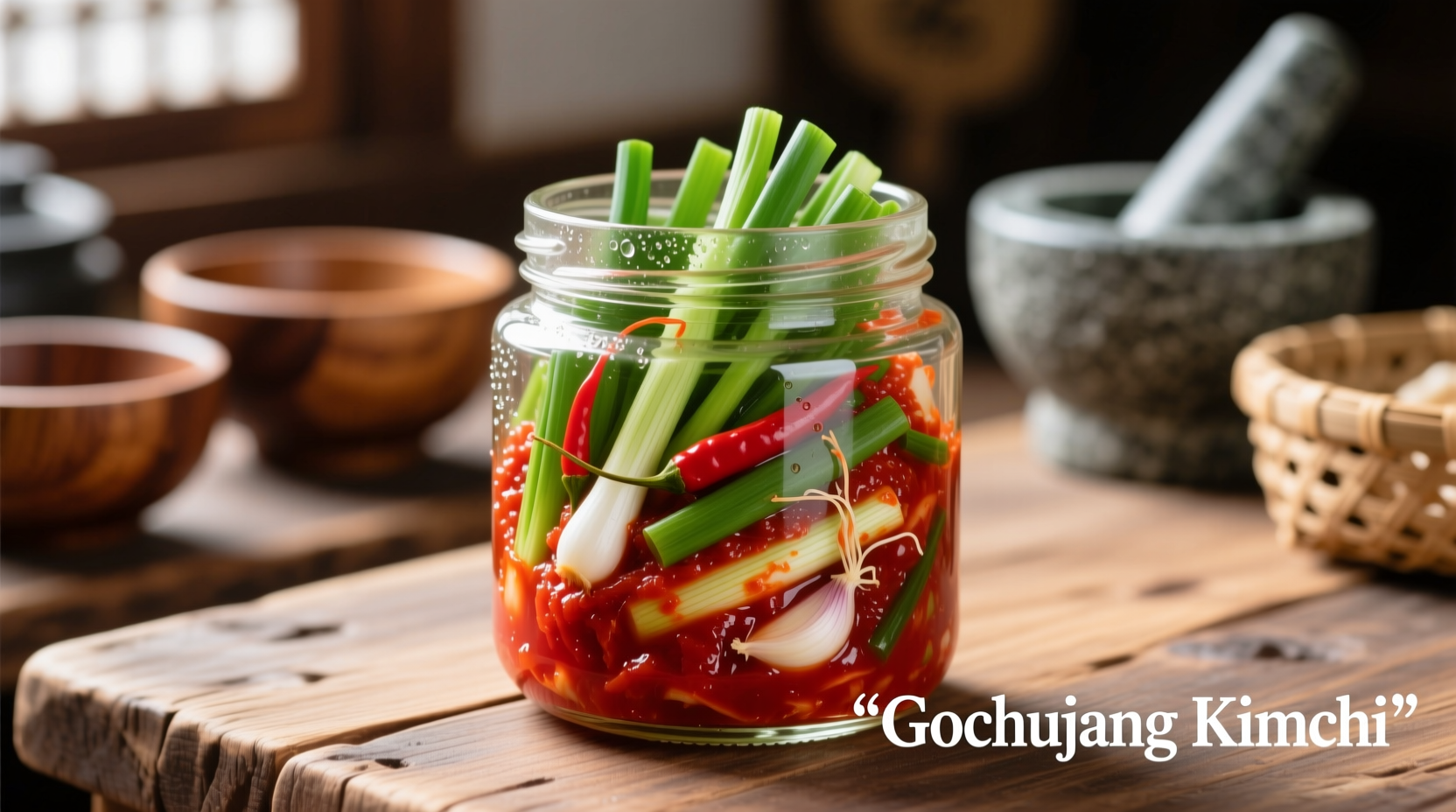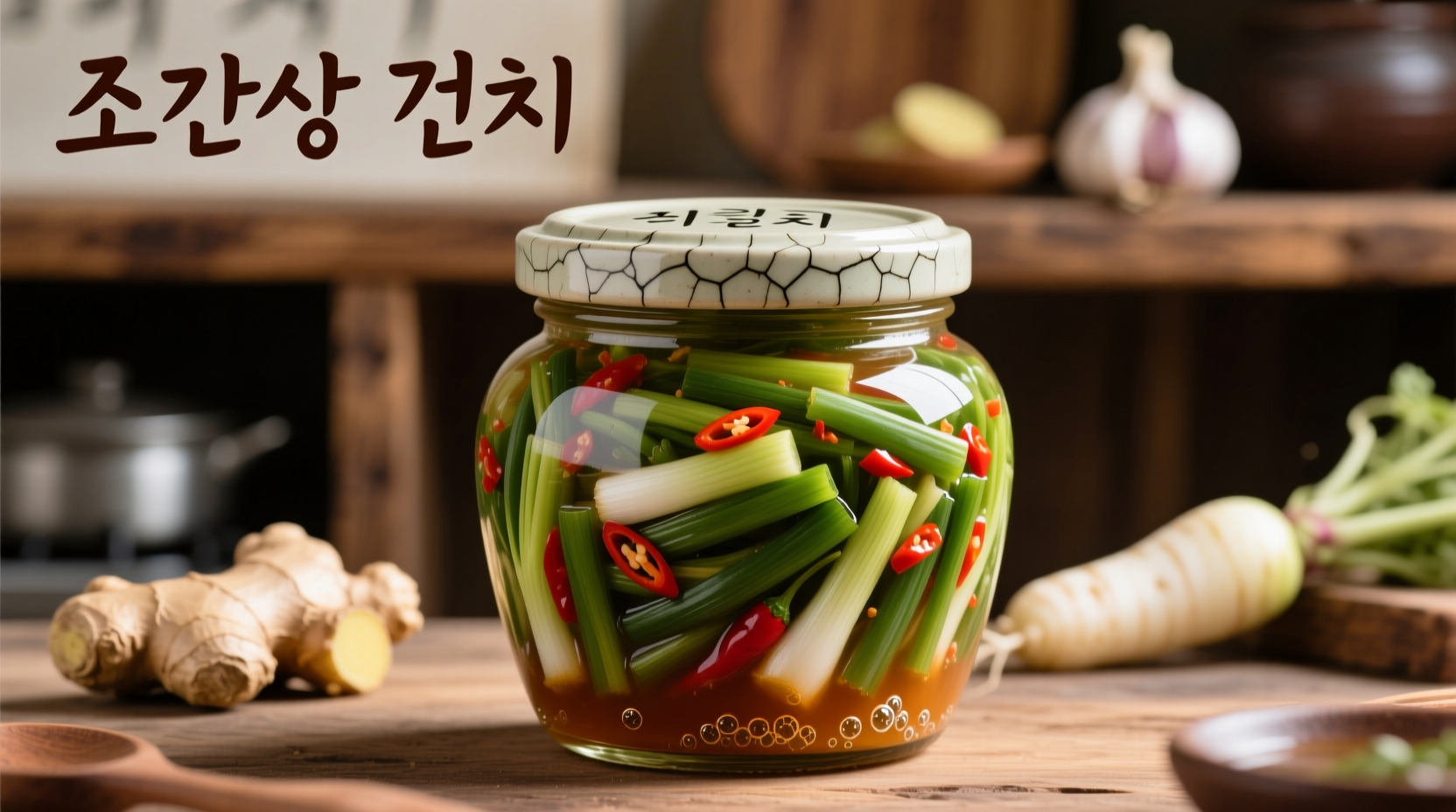Why Green Onion Kimchi Belongs in Your Fermentation Rotation
Unlike traditional napa cabbage kimchi requiring weeks to develop complex flavors, green onion kimchi (pa muchim) transforms humble scallions into a vibrant, probiotic-rich side dish in mere days. Korean households have relied on this quick-fermenting preparation for generations—especially during scallion harvest season—to preserve summer's bounty while adding digestive-friendly bacteria to meals.
Your Step-by-Step Path to Perfect Scallion Kimchi
Understanding the Core Components
Authentic green onion kimchi balances four critical elements:
- Texture foundation: Whole scallions maintain crunch through fermentation
- Flavor catalyst: Korean red pepper flakes (gochugaru) provide color and gentle heat
- Savory depth: Fish sauce or fermented shrimp adds umami complexity
- Fermentation trigger: Natural sugars in scallions feed beneficial bacteria
What You'll Need (Makes 2 quarts)
Gather these pantry staples before starting:
- 2 lbs fresh scallions (white and green parts intact)
- 3 tbsp Korean red pepper flakes (gochugaru)
- 4 cloves garlic, minced
- 1 tbsp fresh ginger, grated
- 1 tbsp fish sauce (or soy sauce for vegan option)
- 1 tsp sugar
- 1 tsp salt
Preparation Timeline: From Wash to Ferment
Follow this time-verified sequence for optimal results:
- Prep (15 min): Trim root ends, wash thoroughly, and cut scallions into 4-inch lengths
- Brine (30 min): Soak in 4% saltwater solution to soften texture
- Rinse (5 min): Remove excess salt under cold water
- Coat (10 min): Massage spice paste evenly onto scallions
- Pack (5 min): Press into sterilized jar leaving 1-inch headspace
- Ferment (24-72 hr): Store at room temperature away from direct light
Visual Transformation During Fermentation
| Time | Color Change | Texture | Aroma Profile |
|---|---|---|---|
| Day 1 | Bright green | Firm crunch | Raw scallion sharpness |
| Day 2 | Deepening red | Slight give | Spicy tang emerging |
| Day 3 | Vibrant crimson | Crisp-tender | Complex sour-spicy balance |

When Green Onion Kimchi Shines (And When to Choose Alternatives)
This preparation excels in specific culinary contexts while having natural limitations:
- Ideal for: Quick side dishes, bibimbap topping, kimchi fried rice, or as a sandwich condiment
- Not suitable: Long-term storage beyond 3 weeks (texture degrades faster than cabbage kimchi)
- Seasonal limitation: Best made May-September when scallions are most tender
- Flavor note: More pungent than cabbage kimchi—use 25% less if sensitive to alliums
Pro Tips from Korean Kitchen Traditions
Master these authentic techniques for superior results:
- Salt concentration matters: Use 4% brine (40g salt per liter water) for optimal texture without sogginess
- Temperature control: Ferment at 68-72°F (20-22°C)—warmer temperatures accelerate fermentation but risk mushiness
- Container choice: Glass jars with airlocks prevent mold while allowing gas exchange
- Flavor boost: Add 1 tbsp fermented radish water (dongchimi juice) to jumpstart fermentation
Serving and Storage Guidelines
Maximize freshness and safety with these evidence-based recommendations from the USDA Food Safety and Inspection Service:
- Refrigerate after 72 hours at room temperature
- Consume within 3 weeks for peak quality
- Always use clean utensils to prevent contamination
- Discard if mold appears on surface (unlike cabbage kimchi, scallion versions don't tolerate surface mold)
Nutritional Benefits Backed by Research
A 2022 study published in Frontiers in Microbiology confirmed that properly fermented green onion kimchi contains:
- Over 107 CFU/g of beneficial Lactobacillus strains
- Enhanced bioavailability of antioxidants compared to raw scallions
- Natural vitamin K2 production during fermentation
These probiotic benefits support digestive health while the allium compounds provide anti-inflammatory effects.
Troubleshooting Common Issues
Resolve these frequent problems with targeted solutions:
- Mushy texture: Over-fermentation or insufficient brining—reduce room temperature time by 24 hours
- Excessive saltiness: Rinse scallions more thoroughly after brining
- Weak fermentation: Add 1 tsp sugar to feed bacteria or include a spoonful of active kimchi
- Mold development: Ensure complete submersion in liquid and use airtight container
Cultural Context: More Than Just a Side Dish
In Korean culinary tradition, green onion kimchi (pa kimchi) holds special significance as a banchan (side dish) that bridges seasons. Historically prepared during May scallion harvests, it provided essential nutrients during Korea's gogi sal (meatless) periods when protein sources were scarce. The National Institute of Korean Food Science and Technology documents its role in preserving summer harvests before refrigeration existed—a practical solution that evolved into today's beloved condiment.











 浙公网安备
33010002000092号
浙公网安备
33010002000092号 浙B2-20120091-4
浙B2-20120091-4